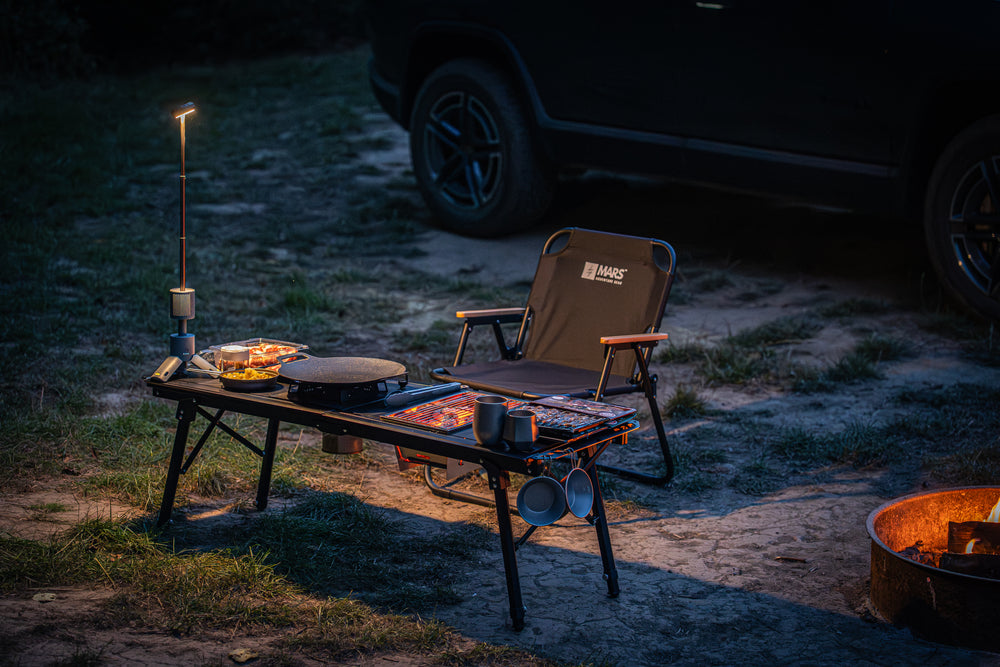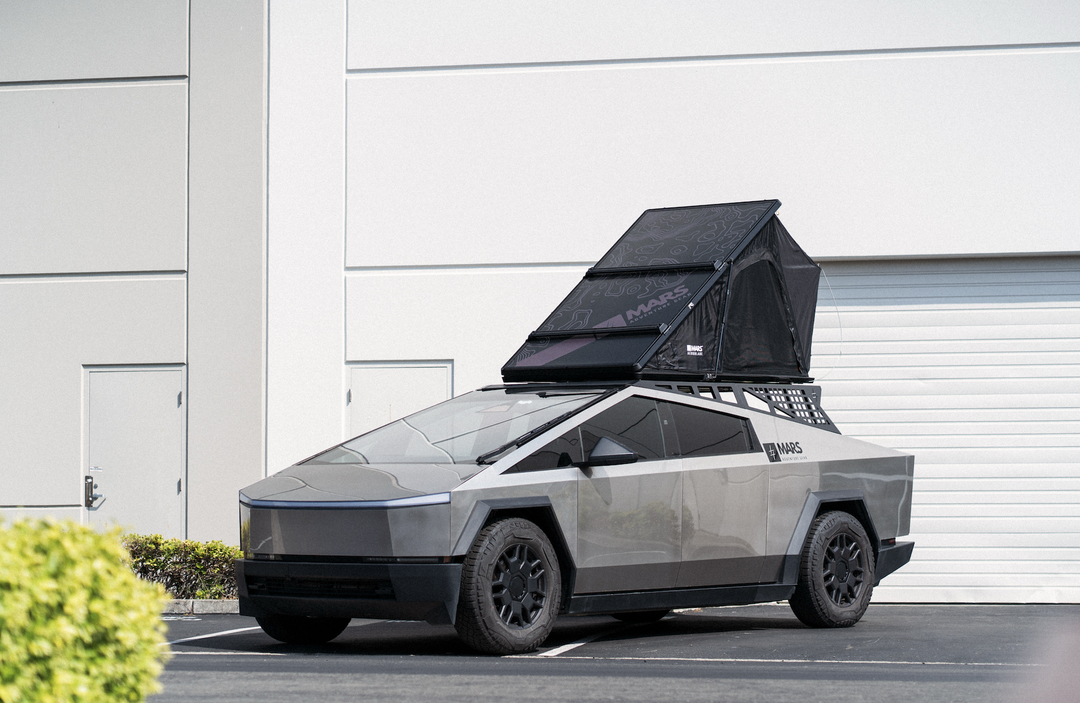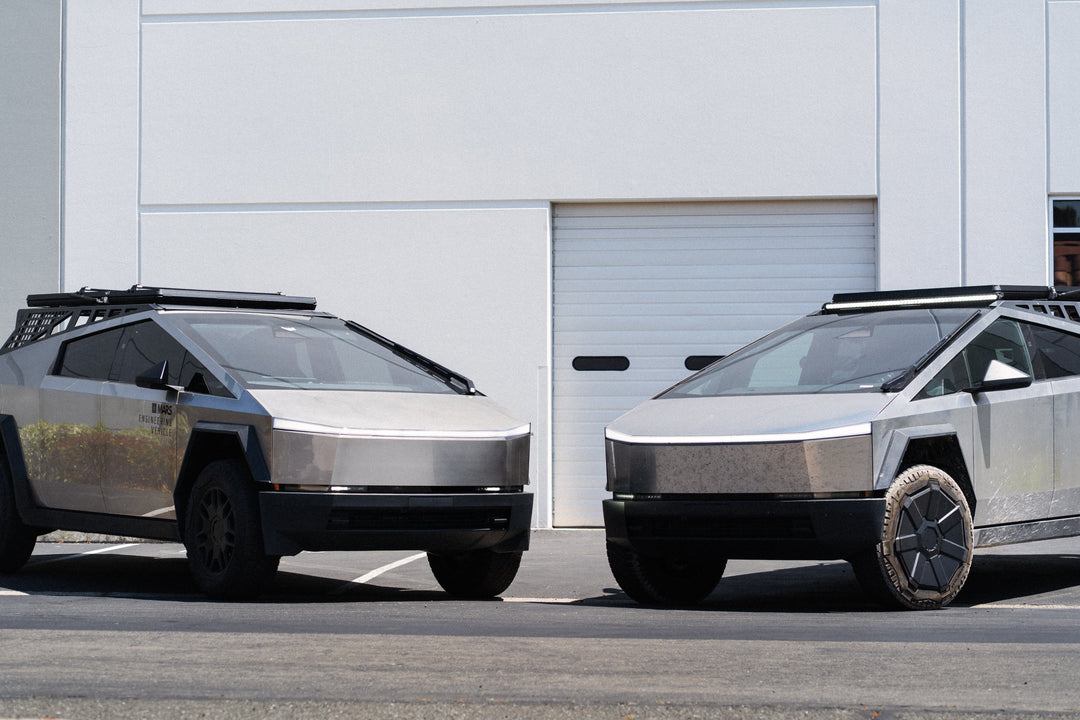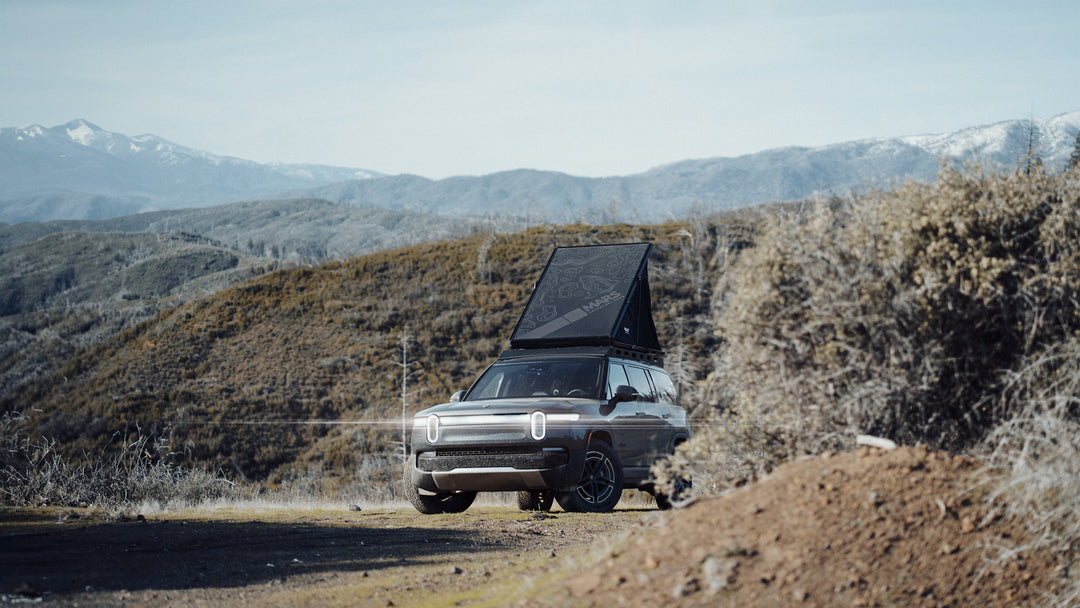From Superchargers to Sand Dunes: Tesla Cybertruck’s 200-Mile Overlanding Trip Across the Mojave Desert


We recently embarked on an epic overlanding journey across the Mojave Desert in the Tesla Cybertruck to test if it’s truly built for the rugged outdoors. The trip covered nearly 200 miles, starting at a Tesla Supercharger in Needles, CA, and finishing in Baker, CA.

Adding to the challenge, temperatures stayed around 110°F throughout the day, forcing us to keep the AC running, which wasn’t ideal for maximizing vehicle efficiency.

PERFORMANCE HIGHLIGHTS
The Cybertruck performed flawlessly. Despite the rugged conditions, we never even needed to engage the diff locks. It powered through difficult sections with some minor tire slippage, but nothing serious enough to require extra traction. On the smoother dirt trails, we even hit speeds of up to 55 mph, which allowed us to cover most of the route in just over a day of driving.

The most impressive feature was the air suspension. Even on uneven, rutted dirt roads, the ride remained remarkably comfortable. Baja mode enhanced the experience, offering maximum control over forward momentum, which made tackling challenging terrain much easier.
At certain points, the trail narrowed and was packed with obstacles. Initially, we were concerned that the Cybertruck’s long wheelbase would make navigation difficult, but the rear-wheel steering proved to be a game-changer. The truck handled tight turns and bushy trails with the agility of a much smaller vehicle. We never encountered a situation where we had to back up or re-adjust to make it through a corner, thanks to the nimble handling provided by rear-wheel steering.
CHARGING SITUATION
Now, let’s get to the question most of you are probably wondering about—how did the battery hold up on this trip?

Day 1
We charged the Cybertruck to 100% at a station in Needles, CA, giving us roughly 313 miles of range. By the time we arrived in Goffs, the starting point of the trail, we were down to around 85% due to the steep uphill drive from Needles.
On the first day, we covered about 50 miles of off-roading and another 40 miles on the highway. The Cybertruck showed a range drop of around 150 miles, largely due to frequent stops, running the AC at 71°F in 110°F heat, and the steep climbs we encountered.
At camp that night, I set up a generator (rated at 3.75 kW running power) and was able to charge the vehicle at a rate of 5 miles per hour. After running the generator for about 6 hours, we added around 30 miles of range before turning in for the night.
The generator added around 130 lbs and took up a fair amount of space in the truck bed. However, since we stored most of our gear in the rear seat compartment, we didn’t mind the extra weight or the space the generator occupied.
Day 2
Day two was much smoother. With the extra 30 miles added to the battery and mostly downhill driving ahead, the vehicle’s energy consumption stayed close to its rated level. We covered another 80 miles of off-road terrain, including sand dunes, rutted dirt roads, and narrow trails. After exiting the trail, we drove about 10 miles on the highway before arriving at a Supercharger station in Baker with around 5% battery remaining.
In total, we drove roughly 180 miles (give or take a few, since we were off the grid and didn’t keep exact records) between the two Supercharger sessions, with an additional 30 miles added by the generator.
FINAL THOUGHTS
The Tesla Cybertruck exceeded our expectations as a capable overlander. From handling tough terrain with ease to delivering a comfortable ride thanks to its advanced suspension, it proved itself to be more than just a futuristic vehicle—it’s built for adventure. And despite the challenging conditions, the battery range was more than manageable with a combination of Supercharger stops and a portable generator.
If you’re wondering whether the Cybertruck can handle serious off-road journeys, this trip should answer your questions. Stay tuned for more adventures as we continue to push the limits of electric overlanding!

GEAR INSTALLED FOR THIS TRIP
- MarsAG Expedition Rack System
- MarsAG Side Awning
- MarsAG Accessory Mount
- Frontrunner Light Bar
- Baja S2
- MaxTraxx traction boards
- WeBoost Signal Booster





